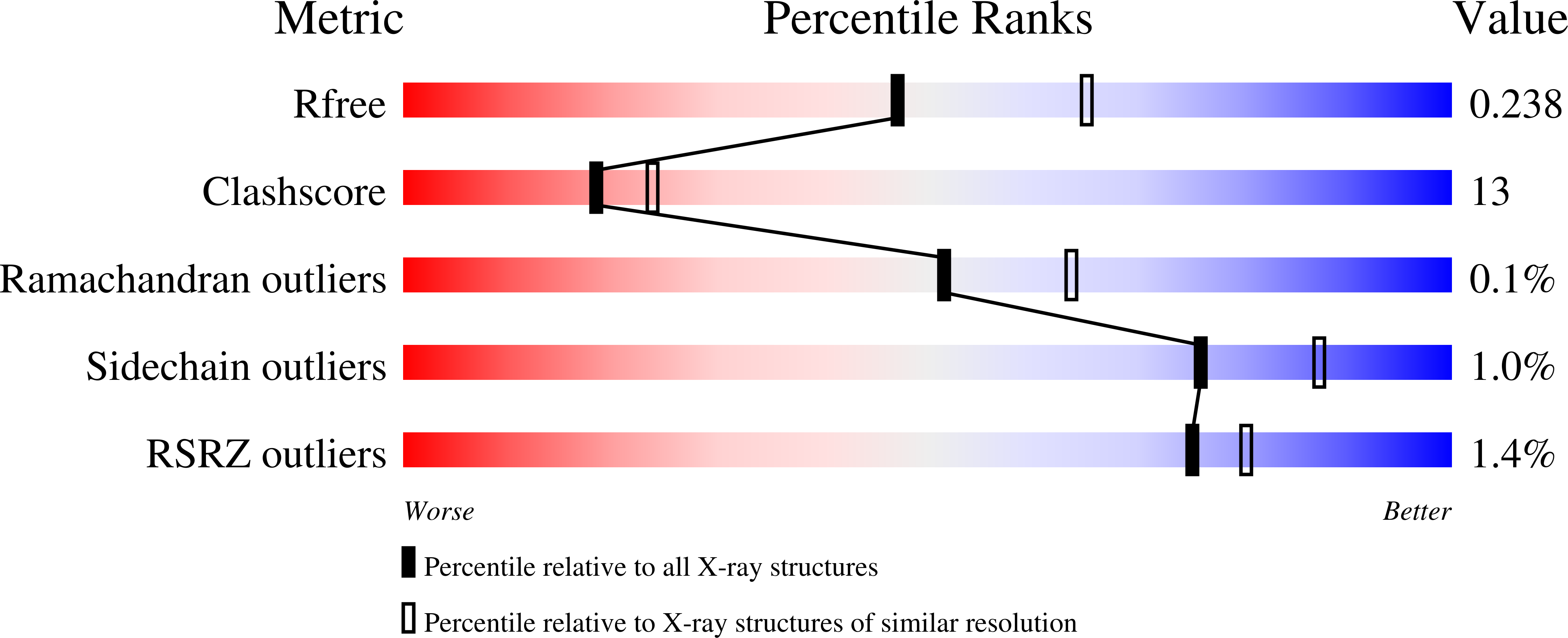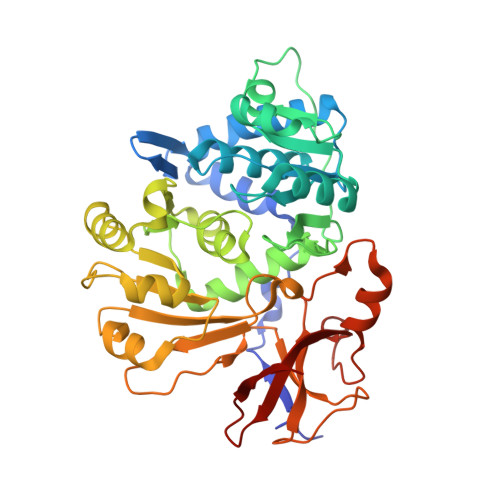Structural and functional insights into delta-poly-L-ornithine polymer biosynthesis from Acinetobacter baumannii.
Patel, K.D., Gulick, A.M.(2023) Commun Biol 6: 982-982
- PubMed: 37752201
- DOI: https://doi.org/10.1038/s42003-023-05362-4
- Primary Citation of Related Structures:
8G95, 8G96, 8G97, 8G98 - PubMed Abstract:
Cationic homo-polyamino acid (CHPA) peptides containing isopeptide bonds of diamino acids have been identified from Actinomycetes strains. However, none has been reported from other bacteria. Here, we report a δ-poly-L-ornithine synthetase from Acinetobacter baumannii, which we name PosA. Surprisingly, structural analysis of the adenylation domain and biochemical assay shows L-ornithine as the substrate for PosA. The product from the enzymatic reaction was purified and identified as poly-L-ornithine composed of 7-12 amino acid units. Chemical labeling of the polymer confirmed the isopeptide linkage of δ-poly-L-ornithine. We examine the biological activity of chemically synthesized 12-mer δ-poly-L-ornithine, illustrating that the polymer may act as an anti-fungal agent. Structures of the isolated adenylation domain from PosA are presented with several diamino acids and biochemical assays identify important substrate binding residues. Structurally-guided genome-mining led to the identification of homologs with different substrate binding residues that could activate additional substrates. A homolog from Bdellovibrionales sp. shows modest activity with L-arginine but not with any diamino acids observed to be substrates for previously examined CHPA synthetases. Our study indicates the possibility that additional CHPAs may be produced by various microbes, supporting the further exploration of uncharacterized natural products.
Organizational Affiliation:
Department of Structural Biology, Jacobs School of Medicine and Biomedical Sciences, University at Buffalo, SUNY, Buffalo, NY, 14203, USA.
















